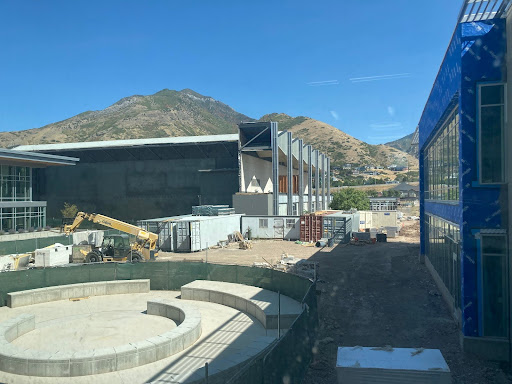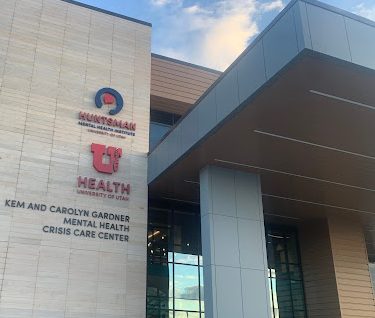On August 25, Judge Diana Gibson struck down Utah’s legislative maps, upholding Utah’s Proposition 4 from 2018. Campaign Legal Center, on behalf of the League of Women Voters and Mormon Women for Ethical Government, successfully convinced the trial court to uphold the proposition, which won the majority vote in Utah to appoint an independent, unbiased redistricting committee to create congressional maps. These congressional maps are used for choosing Utah members of the House of Representatives.
In 2018, the proposition was introduced to prevent gerrymandering, which is the manipulation of congressional districts to favor one party. In this case, the Utah Legislature ignored Proposition 4 (despite it winning the majority vote) and drew their own congressional maps to favor the Republican party, discounting an independent redistricting committee. Before the gerrymandered maps, Utah had one congressional district that was competitive for Democrats, since it mainly consisted of residents from Salt Lake City, who generally lean more liberal than the rest of the state.
When asked in an email interview what motivated them to bring the lawsuit against the Utah Legislature, the League of Women Voters said, “What motivated us was the legislature’s disdain of the voters who passed Proposition 4 to create an independent redistricting commission. The League was stunned by the way legislators treated the commission–a bipartisan commission–which worked diligently to gather citizen input and have it reflected in the maps. The legislature did not appear to consider any of the work from the commission, simply throwing it all out and creating their own map.”
The overturning of Utah’s legislative maps comes as gerrymandering has taken the center of the national stage, in the race for control of the House in the 2026 midterms. Kiana Reid, a Senior who will turn 18 in time to vote in the 2026 midterms, said, “Gerrymandering is just so out of control. It doesn’t matter what party. I don’t like it. I don’t have the […] mentality of ‘Oh, I hate it when the Republicans do it, but I love it when the Democrats do it,’ or something weird like that. Like, either way it’s just kind of annoying. I just want my vote to count.”
The old map split Salt Lake City across four different districts instead of making it its own district as a major population center. Salt Lake City residents, who have swung between Republicans and Democrats in the past, were split among less populated rural areas with a Republican majority. This effectively diluted the voices of Salt Lake City residents, since each district would consistently vote Republican, despite a sprinkling of liberal votes. “Politicians like to say that voters can always vote them out of office if they are dissatisfied with their work. That is nearly impossible in gerrymandered districts,” the League of Women Voters noted.
But the old map has been thrown out, and the court system is requiring politicians to draw their districts sensibly. “While other states are currently redrawing their congressional plans to intentionally render some citizen votes meaningless, Utah could redesign its congressional plan with an intention to protect its citizens’ right to vote and to ensure that each citizen’s vote is meaningful,” Judge Gibson wrote, according to PBS.
The judge ruled that by November 10, legislators would need to present new congressional maps. Republican legislators attempted to reject her ruling, arguing that the deadline she provided was too short to produce a high-quality map. The judge rejected their request to prevent the deadline from taking effect. However, this isn’t the only way Republican legislators have attempted to resist the measure. Republicans appealed to the Utah Supreme Court last week, asking to pause the redistricting efforts. However, their requests were rejected once more, this time by the state’s high court.
It seems that, for now, Utah is set to implement new congressional maps by November 10. If these maps are instituted, several organizations and students are hoping to see both changes in policy and politicians’ behavior.
Reid said, “They were building the map so that they’re more likely to win. They don’t have to listen to the public as much, if that makes sense, because they’re just gonna keep getting voted, because they’ve made the map so that their supporters [..] group together […]. So I think it could make them listen.”
Reid also expressed hope that the new districts would yield more environmentally friendly policies. She said, “One thing that is more focused on in policy that I see anyway, is that, generally speaking, the Democratic Party seems to care a little bit more about environmental and climate change kind of things. […] I think if the redistricting, if Prop 4 is held up, then maybe we should see a little bit more opportunity for environmental policies to get pushed through, which I think is very, very important, because obviously, we’re all concerned about the Great Salt Lake drying up.”
Meanwhile, the League of Women Voters expressed hope for the future of electoral fairness in Utah: “Our Utah Constitution was written to give co-equal status to the people and the politicians they elect. Article I, Section 2: Political power in the people. This section states that ‘all political power is inherent in the people’ and that ‘all free governments are founded on their authority.’”



